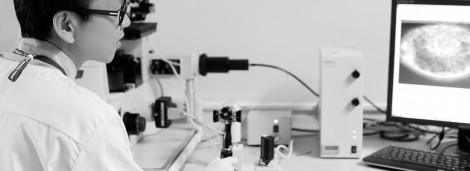Since the latter half of the past century, the medical community has invented the organ transplantation procedure for treating patients with organ failures, such as liver cirrhosis, cardiomyopathy and chronic renal failure. Significant improvement in surgical technique and immunosuppressive regimens during the past decades leads to the high success rate of organ transplantation worldwide. Presently, one of the major limitations of organ transplantation is the shortage of suitable donor organs. To address this problem, several medical and scientific investigators have tried to find alternatives to replace damaged organs of patients by inventing artificial organs, inducing the regeneration of patient’s damaged tissues as well as transplanting the tissue culture-derived healthy cells into the patients with limited success.
In 1981, the scientific breakthrough was made at Cambridge University when Dr. Martin Evans successfully isolated the first embryonic stem (ES) cell line from pre-implantation mouse embryo. This pioneer work in the derivation of mouse ES cells subsequently led to the establishment of the first human ES cell line by Dr. James Thomson at the University of Wisconsin-Madison in 1998. The derivation of the first human ES cell line attracted a lot of public attentions with the hope of using such cells for treating many incurable diseases caused by irreversible tissue damages. Those recently recognized stem cell potentials have led to the establishment of the new medical discipline called “regenerative medicine” which focuses on the repairing of damaged tissues caused by injury, diseases or age-related degenerative processes by either transplanting healthy functional cells derived from stem cells into the patients or induction of the patient own stem/progenitor cells to regenerate and replace the damaged tissues.
Stem cells are a group of undifferentiated cells, which possess an extensive self-renewal property as well as the capacity to differentiate to functional cells with specific functions when induced by the appropriate micro-environmental conditions. Due to their unique properties, stem cells have been considered as a potential source for generating specific functional cells that could be used to replace the damaged or injured tissues associated with several diseases, such as cerebrovascular diseases, cardiovascular diseases, liver cirrhosis, diabetes, motor neuron diseases, Parkinson’s disease and Alzheimer’s disease by cell transplantation therapy.
However, most of the clinical applications of stem cells are still in the experimental phase and their potentials to be used in the clinical settings are yet to be verified. Despite the rapid progression in the field of stem cell research around the world during the last few years, stem cell research in Thailand is still in its infancy due to the shortage of stem cell researchers. To circumvent this limitation, the Siriraj Center of Excellence for Stem Cell Research (SiSCR) was established at the Faculty of Medicine Siriraj hospital, Mahidol University, in 2010 to enroll young generation of Thai stem cell researchers, encouraging and supporting them to continue their stem cell research and promoting the stem cell research activities in Thailand.

